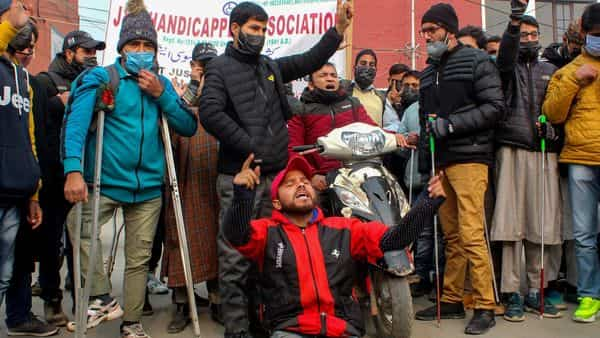Of the many documentaries I saw during the Covid Lockdown, Crip Camp was the standout. Perhaps the fact that I was looking for a summer camp where my son could spend some time independently was why the documentary caught on with me.
Crip Camp is the real story about how a group of teenagers with disabilities spent their summer camp at Camp Jened near Woodstock, New York, in the early 1970s. In the camp, the disabled youth got to know themselves, explored the relationships between disability and society, and came together to develop a different way of understanding disability. In the decades that followed, these young people fought for the rights of people with disabilities that eventually created the landmark American Disability Act (ADA), signed by President George W. Bush in 1990. The summer camp inadvertently became a training ground for one of the most important social movements.
After studying social movements and immersing myself in the disability movement in India, I tried to understand why there is such slow progress here on disability rights, even though there have been many advocates.
1. Lack of collective anger: the disabled community has rarely come together on a common platform. The community itself is hierarchical between disability types, despite efforts towards equality and collaboration. Each handicapped group has its own struggle. For example, people with autism do not see the blind or the deaf as members of the same community. Therefore there is no such thing as a collective anger based on a shared experience.
2. No clearly defined enemy: If the enemy is the entire system or society and not an individual or a unit, it becomes very difficult to fight. Having a clearly visible common enemy – like the British during the Indian independence movement or Donald Trump during the 2016 women’s march – makes it a lot easier to come together.
3. Learned helplessness: This is a phenomenon in psychology in which a person suffers from a feeling of powerlessness resulting from a traumatic event or persistent failure of success. Many people in the disabled community suffer from this phenomenon in which most people have given up and are conditioned to accept the status quo provided they do not have the power to change the system.
4. No visual metaphor: The Syrian war reached a turning point with the picture of the dead three-year-old boy Alan Kurdi; This picture caught the world’s attention and saw an increase in donations to the cause. Similarly, several young civil rights activists were attacked by police dogs in downtown Birmingham on May 3, 1963. The image of such a protester spurred the action across the country. In India we did not have an effective visual metaphor for disability that would stimulate the collective consciousness of society.
5. No coercive function that gains massive visibility: Gun violence is a big problem in the US. The movement against gun violence always gets a nationwide audience. All families affected by gun violence have the same purpose and fight for the same solution: gun ban. Similarly, the Black Lives Matter movement received a focus after the death of George Floyd. Unfortunately, there was no coercive function in relation to the disability rights movement in India, no single solution for everyone to gather behind. Each individual develops their own Jugaad solutions to overcome their micro-problems. As a result, the macro problem is not solved.
6. Insufficient Leadership With Disabilities: The progress made in India on disability rights legislation was not the result of government benevolence. Executives with disabilities, like the late Javed Abidi and many others, had to fight tooth and nail to make this happen. We need more disabled people at the top, fighting against public apathy and hostility and building a vibrant movement. Progress can only come from the disabled themselves.
Judith Heumann attended Camp Jened every summer from the age of nine to the age of 18. Heumann’s experience at the camp brought her a greater awareness of how disabled people are connected through a shared experience. She later said, “We had the same joy together, the same anger over the way we were treated, and the same frustrations over opportunities we didn’t have.” Heumann became a lifelong civil rights activist for people with disabilities. In 2010, she was appointed Special Advisor on International Disability Rights to the US State Department by President Barack Obama.
What made Camp Jened campers such effective activists was that early on they had the rare chance to face their own limited perspectives and broaden their horizons. Camp Jened gave disabled young people the opportunity to discuss and argue among themselves and to express their common desire for privacy and physical freedom. Soon campers began to have an idea of what their life might be like. And when real life fell so dramatically short, it spurred her to fill the void through activism.
Maybe we need this – our own Jened Camp to build the next generation of passionate disability activists in India.
VR Ferose is a senior executive at the SAP Engineering Academy in Palo Alto.
Subscribe to something As good as new newsletter
* * Please enter a valid email address
* * Thank you for subscribing to our newsletter.


Comments are closed.